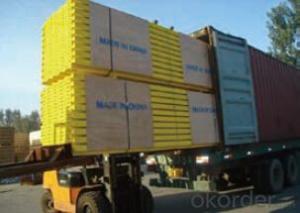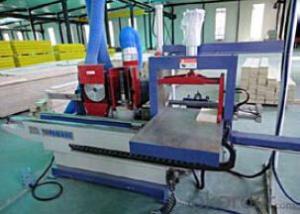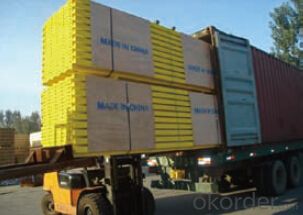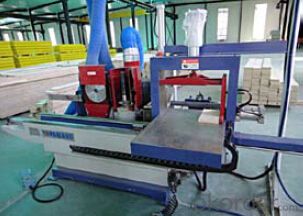Timber beam H-20 for formwork and scaffolding system
- Loading Port:
- Tianjin
- Payment Terms:
- TT OR LC
- Min Order Qty:
- 50 m²
- Supply Capability:
- 1000 m²/month
OKorder Service Pledge
OKorder Financial Service
You Might Also Like
Characteristics:
◆ Standardized production lines.
Supply capability: 3000m/day, Lmax = 6600mm.
◆ Finger jointing of the flange and web, the strength of timber beam is highly improved.
Max. shearing force failure load:40KN
◆ Well treated to prevent from water penetration or erosion, so the service life maximally extended.
Normally, CNBM timber beam H20 can be used for 4 to 5 years, the exact using time would depend on maintenance & storage.
◆ Robust caps at the end of the girders protect against damages.
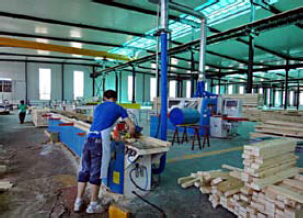
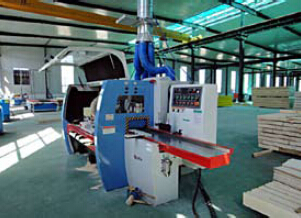
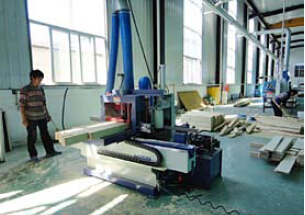
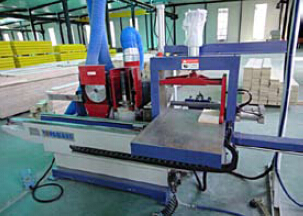
- Q: How does steel formwork contribute to the overall durability of the structure?
- Steel formwork is an essential component in the construction industry, and its use significantly contributes to the overall durability of a structure. One of the primary reasons for this is the inherent strength and durability of steel itself. Steel formwork is made from high-quality steel, which is renowned for its exceptional strength and resilience. The robustness of steel formwork ensures that it can withstand the immense pressure exerted by the concrete during the pouring and curing processes. This is particularly important in the construction of large-scale structures, where the concrete load can be substantial. Steel formwork provides the necessary support to ensure that the concrete maintains its shape and form, preventing any deformations or cracks from occurring. Moreover, steel formwork is highly resistant to corrosion, which is a significant concern for construction materials exposed to moisture and environmental elements. This resistance to corrosion ensures that the formwork remains intact and retains its strength over time, even in harsh conditions. By preventing corrosion, steel formwork helps in maintaining the structural integrity of the concrete by avoiding any potential damage caused by rusting or deterioration. In addition to its strength and corrosion resistance, steel formwork is also known for its reusability. Unlike traditional timber formwork, steel formwork can be used multiple times, reducing the need for constant replacement. This not only saves costs but also minimizes waste and contributes to sustainable construction practices. The ability to reuse steel formwork ensures that the structural elements of a building are consistently strong and durable throughout the entire construction process. Furthermore, steel formwork provides a smooth surface finish to the concrete, enhancing the overall aesthetics of the structure. This smooth finish reduces the need for additional surface treatments, saving time and resources in the construction process. Additionally, it improves the durability of the structure by minimizing the risk of cracks and imperfections, which can weaken the overall integrity of the construction. In conclusion, steel formwork significantly contributes to the overall durability of a structure due to its strength, corrosion resistance, reusability, and ability to provide a smooth surface finish. By providing reliable support during concrete pouring, maintaining its structural integrity over time, and enhancing the aesthetics of the building, steel formwork plays a crucial role in ensuring that the structure remains durable and resilient for years to come.
- Q: How does steel formwork contribute to the sustainability of a project?
- Steel formwork contributes to the sustainability of a project in several ways. Firstly, steel is a durable and long-lasting material, which means that steel formwork can be reused multiple times, reducing the need for new formwork and minimizing waste. Additionally, steel formwork allows for precise and accurate construction, resulting in less material wastage during the project. Furthermore, the use of steel formwork can significantly speed up the construction process, reducing the overall energy consumption and environmental impact associated with the project. Overall, steel formwork helps to optimize resources, reduce waste, and increase efficiency, making it an environmentally sustainable choice for construction projects.
- Q: Can steel formwork be used for high-rise buildings?
- Yes, steel formwork can be used for high-rise buildings. Steel formwork is known for its durability, strength, and ability to withstand high concrete pressures. These characteristics make it suitable for constructing tall structures such as high-rise buildings. Steel formwork systems are designed to provide stability and support during the construction process, ensuring that the concrete is properly shaped and cured. Additionally, steel formwork can be easily assembled and disassembled, allowing for efficient construction and adaptability to different project requirements. Overall, steel formwork is a reliable and commonly used solution for high-rise building construction.
- Q: Can steel formwork be used in heritage or conservation projects?
- Yes, it is possible to utilize steel formwork in heritage or conservation projects. Steel formwork possesses numerous advantages that render it appropriate for such endeavors. Firstly, steel formwork exhibits exceptional durability and longevity, making it indispensable when working on historical structures that necessitate preservation for future generations. It can endure the challenges of construction and can be reused multiple times, thus offering a cost-effective solution. Furthermore, steel formwork provides outstanding strength and stability, guaranteeing accurate and precise concrete placement. This is particularly critical in heritage projects where maintaining the original design and structural integrity is paramount. The adaptability of steel formwork also enables the replication of intricate detailing and complex shapes, thereby making it suitable for recreating historic architectural features. Moreover, steel formwork is highly resistant to warping, shrinking, or expanding due to temperature fluctuations and moisture, which are often encountered in conservation projects. This resistance ensures the formwork's stability throughout the construction process, reduces the risk of harm to the heritage structure, and aids in preserving the overall structural integrity. Nevertheless, it is crucial to take into account the specific requirements and limitations of each heritage or conservation project. Certain projects may have stringent guidelines mandating the use of traditional materials, rendering steel formwork unsuitable. It is imperative to consult with heritage experts and conservation specialists to ensure that the use of steel formwork aligns with the project's objectives and adheres to all necessary preservation standards.
- Q: What is the maintenance required for steel formwork?
- The maintenance required for steel formwork typically includes regular cleaning, inspection for any signs of damage or wear, and occasional touch-up painting to prevent corrosion. Additionally, proper storage and handling are important to ensure the longevity and effectiveness of the steel formwork.
- Q: What are the different types of formwork ties used in steel formwork?
- Steel formwork systems commonly utilize various types of formwork ties to secure the formwork panels together and maintain the formwork structure's stability and strength. 1. The wedge tie, which is the most commonly employed formwork tie in steel formwork, involves inserting a wedge-shaped metal piece into a hole in the formwork panel. By tightening the wedge, a robust connection is established, firmly holding the panels in place. 2. The pin and wedge tie is another type of tie that consists of a pin and a wedge. The pin is inserted into a hole in the formwork panel, and subsequently, the wedge is driven into the pin, creating a tight connection. 3. The wing nut and tie rod tie system employs a wing nut and a tie rod to secure the formwork panels together. The tie rod is threaded through the panels and secured by wing nuts on both sides. This tie system allows for the convenient removal and reassembly of the formwork. 4. A coil tie is utilized when the formwork panels need to be fastened to the steel reinforcement bars. The tie is threaded through the formwork panel and then wrapped around the reinforcement bar, establishing a secure connection. 5. Flat ties are employed to tightly connect formwork panels in situations where a secure fit is required. These ties are flat metal strips inserted into holes in the formwork panels and then tightened. These examples illustrate only a few of the various formwork ties employed in steel formwork systems. The choice of tie depends on factors such as the specific formwork design, load requirements, and ease of installation and removal. It is essential to select the appropriate tie system to ensure the stability and safety of the formwork structure.
- Q: How does steel formwork affect the overall sound insulation of a structure?
- Steel formwork does not directly affect the overall sound insulation of a structure. Sound insulation primarily depends on the quality and thickness of the materials used for walls, floors, and ceilings, as well as the design and construction techniques employed. However, steel formwork can indirectly impact sound insulation if it is not properly installed or if it creates gaps or weak points in the structure, allowing sound to pass through.
- Q: What are the different types of supports used in steel formwork construction?
- There are several types of supports that are commonly used in steel formwork construction. These supports are designed to provide stability and structural integrity to the formwork system, ensuring that it can withstand the weight of the concrete during pouring and curing. One of the most common types of supports used in steel formwork construction is the adjustable steel prop. These props are made of adjustable steel tubes that can be extended or retracted to the desired height. They are typically used to support horizontal beams or slabs, and can be adjusted to accommodate different heights and angles. Another type of support used in steel formwork construction is the scaffolding system. Scaffolding consists of a series of metal frames and platforms that are erected to provide a temporary structure for workers to access the formwork. Scaffolding is often used in larger construction projects where multiple levels of formwork need to be supported. Additionally, steel beams and columns can also be used as supports in steel formwork construction. These structural elements are designed to bear heavy loads and provide stability to the formwork system. They are typically used in combination with other types of supports to create a strong and secure formwork structure. In some cases, hydraulic jacks may be used as supports in steel formwork construction. These jacks can be used to provide additional support and ensure that the formwork system remains stable during the pouring and curing process. Overall, the choice of supports in steel formwork construction will depend on the specific requirements of the project, including the size and weight of the formwork, the height and angle of the structure, and the availability of equipment and resources. It is important to carefully consider these factors and select the appropriate supports to ensure the safety and efficiency of the construction process.
- Q: How does steel formwork compare to timber formwork in terms of durability?
- Steel formwork is generally more durable than timber formwork. Steel is a strong and rigid material that can withstand greater loads and pressures compared to timber. It is resistant to warping, rotting, and pest infestations that are common with timber. Additionally, steel formwork has a longer lifespan and requires less maintenance, making it a more durable choice for construction projects.
- Q: How is steel formwork adjusted for different concrete thicknesses?
- Steel formwork can be adjusted for different concrete thicknesses by using adjustable formwork systems. These systems typically include adjustable props, beams, and panels that can be configured and secured to accommodate varying concrete depths. The props can be extended or shortened to provide the necessary height, while the beams and panels can be adjusted and connected to ensure a tight fit around the concrete structure. This flexibility allows the steel formwork to be easily adapted to different concrete thicknesses during construction.
Send your message to us
Timber beam H-20 for formwork and scaffolding system
- Loading Port:
- Tianjin
- Payment Terms:
- TT OR LC
- Min Order Qty:
- 50 m²
- Supply Capability:
- 1000 m²/month
OKorder Service Pledge
OKorder Financial Service
Similar products
Hot products
Hot Searches
Related keywords
